'Let the stick do the work': How and why NHLers customize their 'weapon'
Dylan Guenther curls deep in the Utah Hockey Club's zone. He weaves through neutral ice then strategically gears down near the Blackhawks' blue line.
Five minutes have ticked off the Delta Center game clock on Oct. 8, the opening night of the NHL season. It's Utah's debut, and the crowd is buzzing.
Guenther glides into Chicago's end, glances at the goalie, and raises his stick to call for a pass. The puck moves laterally near the top of the right circle, and as soon as it enters Guenther's orbit, it's deposited into the far side of the net.
"Guenther shoots like a cowboy in an old Western movie," longtime NHL shooting coach Tim Turk said of the 21-year-old winger. "This guy is setting records for pulling your gun out of your holster outside the saloon. The pass comes in tight, the puck's basically on his hip, and - boom! - it's in the back of the net."
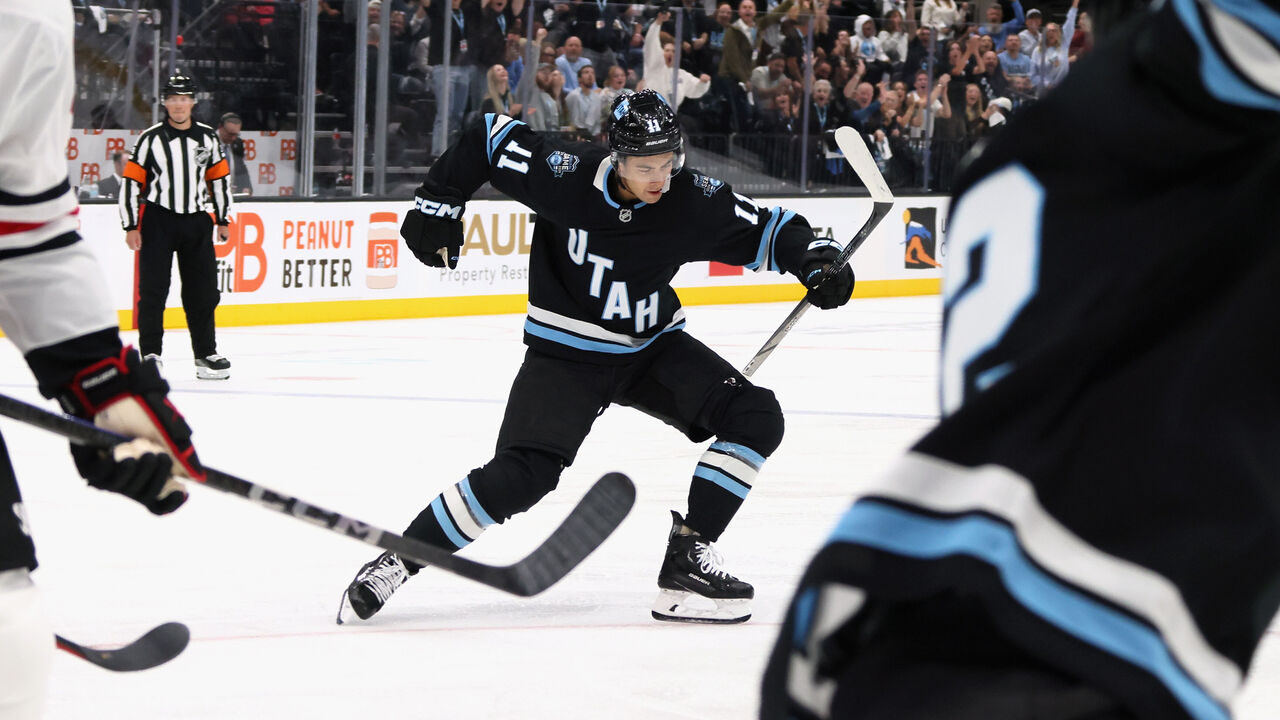
Guenther's nickname, "Gunner," captures his shooter's mentality. He scored 16 goals in 40 games before sustaining an injury in early January. His 1.47 goals per 60 minutes place him 16th among 515 skaters who've appeared in at least 82 contests since the start of the 2023-24 season.
The blink-and-you-miss-it shot first took shape in the unfinished basement of the Guenther family home and at an Edmonton rink with a local skills coach. The finished product required relentless repetition, strength building, minor mechanical changes, and the incorporation of subtle tricks to dupe goalies.
Then there's the whip of Guenther's Bauer stick. The elastic band-like bend in the Vapor Fly Lite model allows him to release the puck a millisecond quicker, which is often the difference between a save and goal. The 77 flex rating helps him get shots off while in unnatural positions - arms outstretched, lower-body turned away from the target, or bottom hand abnormally high on the shaft.
"Sometimes I let the stick do the work," Guenther said in a recent interview.
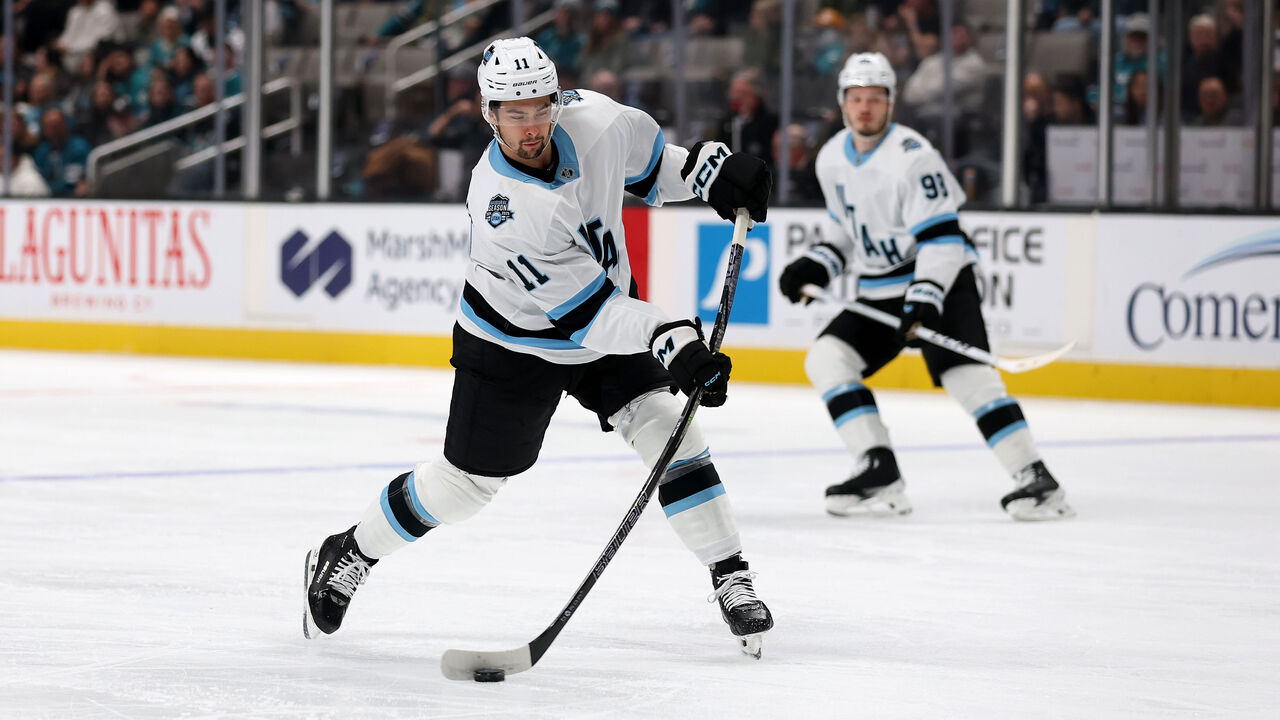
The stick is the most important tool for forwards and defensemen of any age or skill level, and its importance is only amplified in the NHL.
"It's your weapon," Predators forward Filip Forsberg said.
"It's how we play this game," Bruins defenseman Charlie McAvoy said. "You have to have complete confidence and faith in your stick. It's like a PGA golfer with his golf clubs. You look down at that puck and you want to believe your equipment can get the job done."
Below is a brief history of the modern stick, a dive into the many ways NHLers customize sticks, and a discussion about how stick technology and shooting mechanics have given shooters a distinct advantage.
The NHL debuted in 1917, and for about 80 years the stick was made out of the same primary material: wood. Sports equipment company Easton attempted to disrupt the industry in the early 1990s with an aluminum shaft and wood blade combination. Despite having a unique product (a lighter, more durable stick) and a superstar pitchman (Wayne Gretzky), Easton failed to trigger a seismic shift in consumption patterns among both amateur and pro players.
However, Easton's bold play encouraged further research and development. The stick was almost unrecognizable a decade later. Alternative shaft materials moved from aluminum to graphite to composite, or a space-age mix of graphite, fiberglass, and Kevlar. The blade was built into the shaft to create the "one-piece" stick.
The Easton Synergy, available in 2000, was the crown jewel. It ushered in an era of sleek, extra-light, game-enhancing composite one-pieces. "The puck reacts off it like a golf ball off a driver," ex-NHLer Zenon Konopka, then 20, gushed to a reporter in 2001. "I swear it adds 10 miles an hour to your shot."
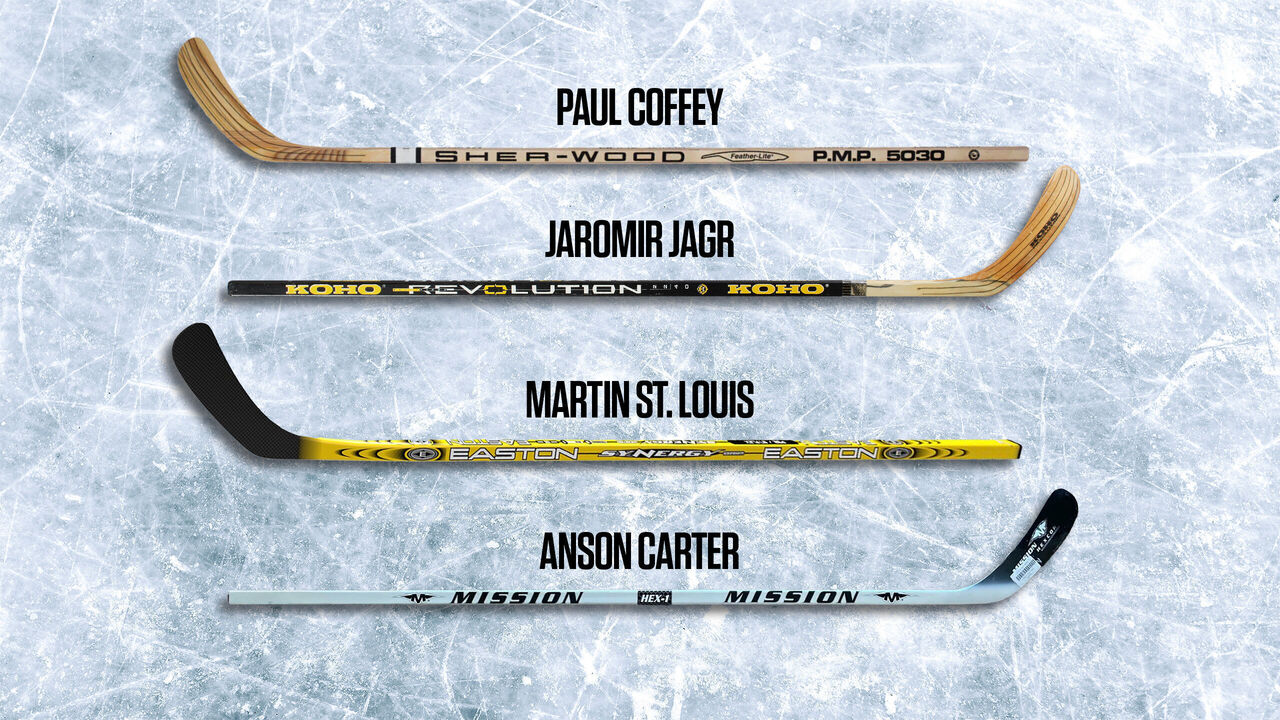
Panthers head coach Paul Maurice originally was "not a fan" of composite. Players on his early 2000s Hurricanes teams grumbled about the new sticks breaking too easily, and he personally believed those early models were suited for only one player type - the offensive creator, like Canes sniper Jeff O'Neill.
"You needed to have a really soft set of hands to handle those first composite sticks," Maurice said. Still, they were high-tech and cool. So when Maurice would go on about legendary shooter Al MacInnis wielding a wood stick, players would respond, "Well, I'm not Al MacInnis, but I can shoot like him now."
Bill Guerin played through the entire wood-to-composite transition as a forward of the 1990s and 2000s. The Wild general manager let out a hearty laugh when asked to compare the last stick he used in 2010 to the ones currently filling Minnesota's stick rack. "It's crazy," Guerin said of the advancements. "If you have a bad shot in today's game, that's on you."
Equipment manufacturers like CCM and Bauer (whose parent company owns Easton) have spent the past 25 years obsessing over every detail of the stick, which is now made primarily out of carbon fiber. Each new model brought to market aspires to be better than the last, and customization's become a central part of the business. The specifications of a stick - blade curve and shape, flex rating, kick point, grip, lie, length, weight - are fully adjustable.
Sidney Crosby is famously superstitious about his gear, which includes a stiff, mildly curved CCM stick. "But, at the same time, you have to continue to try to adapt and evolve," the Penguins captain said of making minor changes to its specs. For one, a short blade helps him pick pucks off the wall better.
Stick makeup is a rare variable an NHLer can control in a chaotic sport known for its randomness. With help from coaches and equipment reps, a player can optimize his stick to fit specific needs. "I hate to use this expression, but it fits: How do we put a player on steroids - legally?" CCM rep Shawn Mamane said.
Mamane, who works with dozens of NHLers, shared a common pitch. "The goal is simple," he'll tell forwards. "If I can find a way to have you load and release 0.3 milliseconds faster than what you've ever done before, that might be the difference between you scoring 10, 15, 20 extra goals a year and not."
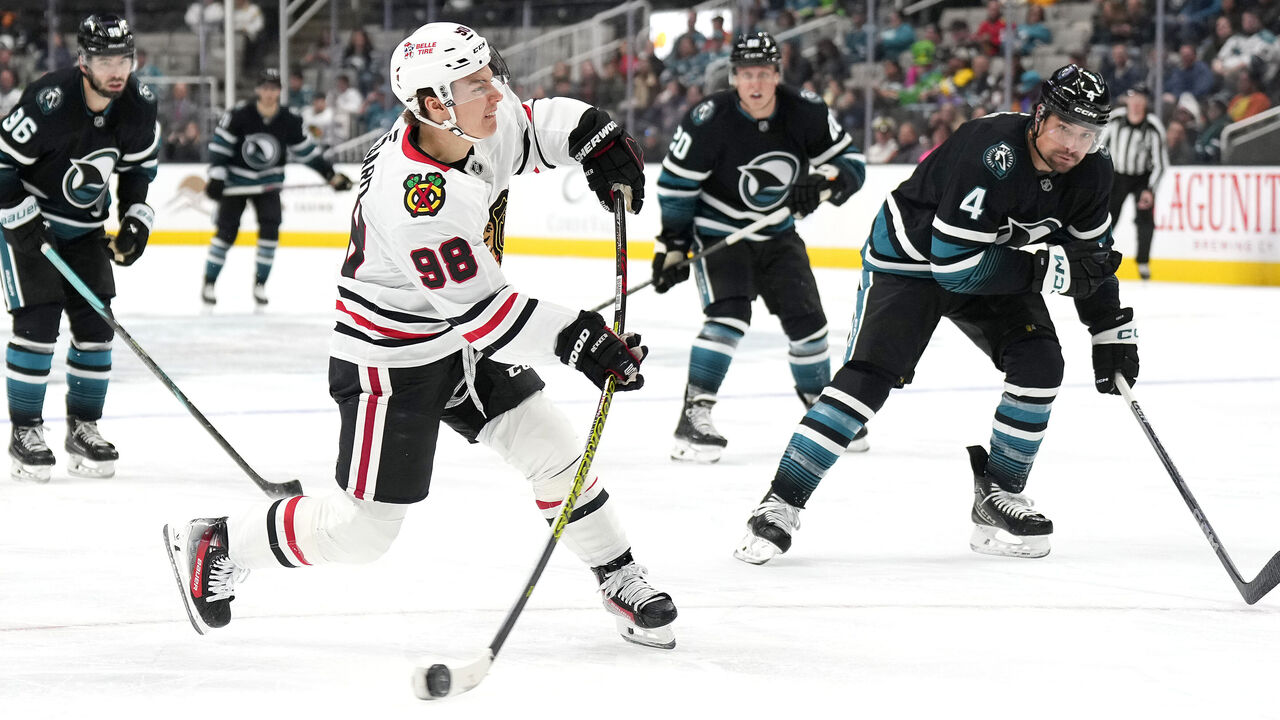
Flex rating is the most talked-about spec. The lower the number, the easier the sub-1-pound stick bends with downward force. Mamane estimates the average NHL skater 10 years ago used a 90-95 flex. Today's average is 75-85.
Blackhawks star Connor Bedard beats goalies with a 70-flex Sherwood. He's listed at 6-feet and 185 pounds yet regularly unleashes accurate 80-mph wrist and snap shots thanks to complementary shooting mechanics and stick specs - an open-face curve and super flexible shaft. "It's just feel, how things feel when I'm using it and releasing the puck," Bedard said. "I try stuff here and there, tweak whatever. But (my specs are almost) always pretty similar."
Utah's Clayton Keller has dabbled with a 65 flex but currently uses 75. New Jersey's Jack Hughes comes in at 77. McAvoy and Colorado's Nathan MacKinnon are 87 guys. Forsberg's at 90. Tampa Bay's Victor Hedman 122.
"I've tried lesser stiffness, but I just can't do it," the 6-foot-7 Hedman said.
There isn't a direct correlation between player size and flex rating. However, forwards and defensemen who play "heavier" tend to prefer stiffer weapons.
Hudson Fasching, a 6-foot-3, 209-pound depth forward for the Islanders, has never put much thought into his flex, in part because the original decision wasn't his. "I broke a lot of sticks back in the day," Fasching laughed. "My dad's like, 'We're giving you the highest flex so you can't break it,' and I've just gotten so used to 95 over the years. I've gotten stronger, so it's become easier to shoot with it. The 95 is really good for puck battles - it gives you better stability, strength - and winning battles is such a big part of my game."
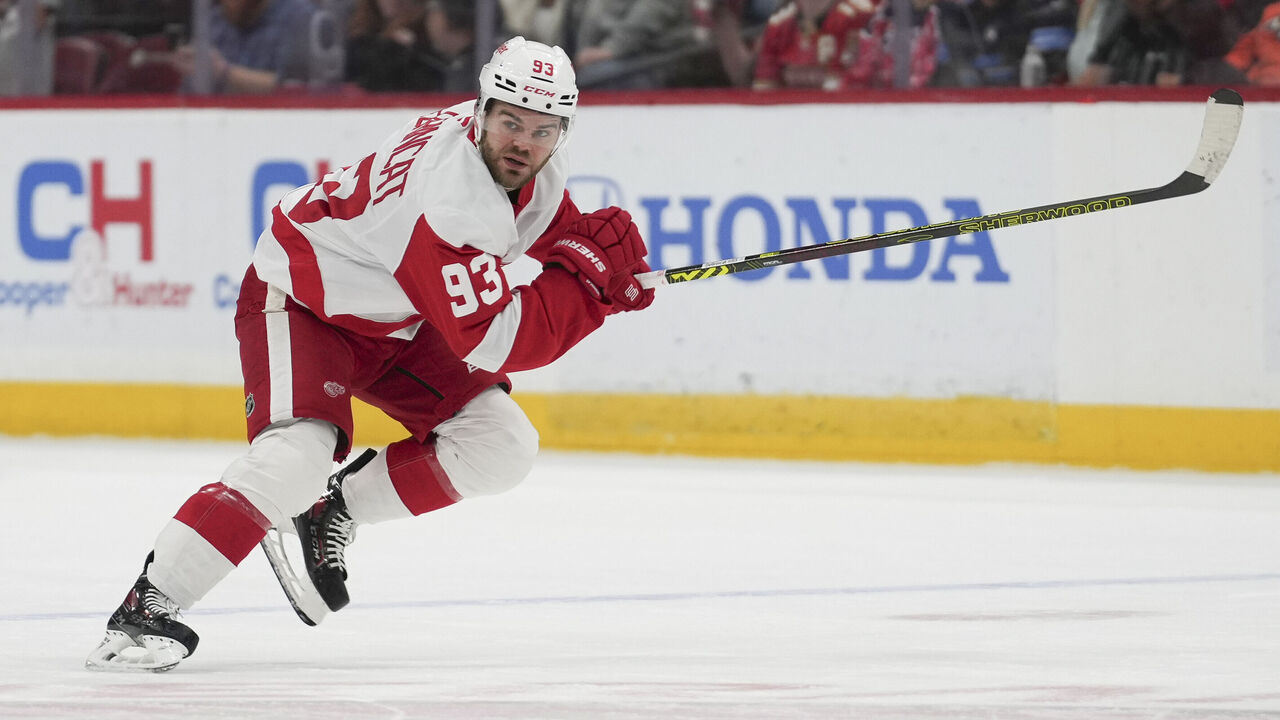
The kick point is the spot on the shaft that bends the most when a player shoots.
A low kick point, located about a foot from the blade, is used mainly by quick-load shooters like Guenther and Bedard. It's best for short-distance shots, where power can be sacrificed for the puck arriving on and departing the blade rapidly. A mid kick, located near the middle of the shaft, is used by most defensemen. It maximizes energy transfer and puck speed during a slap shot.
Alex DeBrincat "splits the difference" by using a hybrid kick point. "Everyone's got their preference," the Red Wings forward said of his middle-ground option. "It depends on what your bread and butter is, right? If you're going to take wrist shots all the time, a low kick point is great. I take wrist shots but also a lot of one-timers, so I've needed something slightly different."
Most players today are drawn to sticks with a curve toward the end of the blade. This toe curve is better for dynamic stickhandling and helps the shooter efficiently pull the puck into his body. It pairs well with lower flexes and kicks in an era of wrist and snap shots. With the game so fast, and goaltending so sharp, shooters often don't have enough time and space for a full windup.
Mamane estimates between 70%-80% of players in the NHL, AHL, NCAA, and Canadian major-junior leagues use a toe curve (P28 or P92 in industry-speak), hybrid curve (P90 or P88), or a modest variation of the two. Playmakers usually settle on a hybrid for its versatile traits.
Making up most of the other 20%-30% are forwards seeking a dangerous backhand and defensemen prioritizing stick checks and short passes. "A little bit more flat on the front for a little bit better backhand," explained Forsberg, a two-time 40-goal scorer. "Nice and straight," added Hurricanes blue-liner Jaccob Slavin. The elite defender operates a modified version of Bauer's PM9, which one stick website labeled "the straightest curve on the market."
NHL clubs pay for their players' sticks. An annual budget can run around $400,000, according to one longtime equipment manager. The manager plans for 25 players and 96 sticks per player, or about 2,400 total sticks at a sizable discount from the retail price. (Players signed to endorsement contracts are part of that 25. These superstars receive free samples and sometimes a bonus product allotment, but their six-figure deals don't include an endless supply of sticks.)
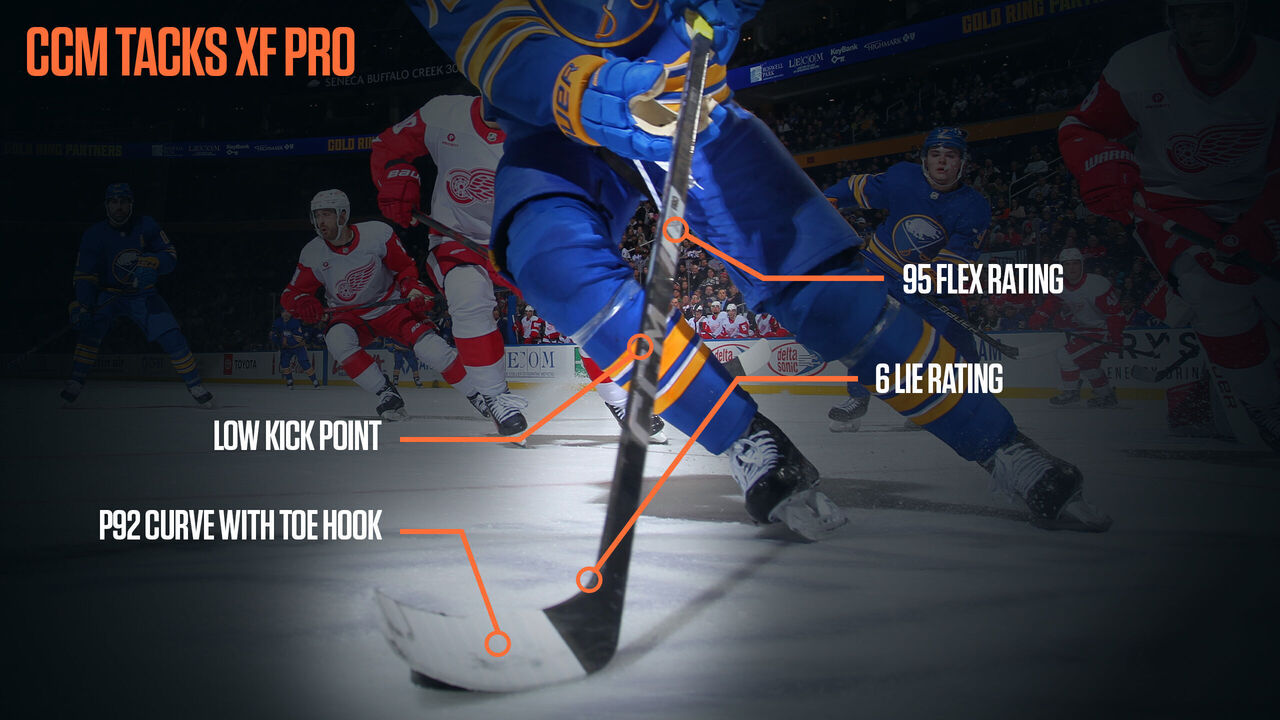
Some players use a fresh stick every game. Others switch in the middle of a slump or after noticing a dip in stick performance. Some, such as Adam Fox of the Rangers, rarely tinker with specs, while others, like the Sabres' Tage Thompson, are "equipment nerds."
As the image above shows, Thompson uses a goal-scorer's curve and a low flex rating relative to his 6-foot-6, 220-pound body. Length is the most interesting bit of his CCM: Depending on the day, the shaft's knob will line up with Thompson's collarbone or Adam's apple when he's standing on skates.
"Being able to change the angle of my shot is really important to me," Thompson said. "Having a shorter stick allows me to pull the puck into my feet better. Then, when it's close to your body, you need a different lie than most people. My lie's very upright. If it wasn't, I wouldn't stickhandle as well."
When Kyle Palmieri talks about his Bauer, he sounds like an artist who's fresh off testing a new paintbrush. It took the Islanders winger "basically all summer" to feel comfortable switching the construction of his stick from a 12-year-old model to one created six years ago. "I can pick up a stick and right away know how it feels and if I'm going to like it," Palmieri, 33, said. "Some of the super light ones that companies have come out with lately, I won't even ask for them. I know I won't like them. It's just too big of an adjustment."
John Tavares admits to struggling with change, too. In 2021, he tweaked his curve for the first time in 15 years, before taking a bit of weight out of his blade in 2023. Both changes called for hours of thought and experimentation.
"I've really liked the way my release has come along over the past couple of years," the 34-year-old Maple Leafs center said. "I've adapted to those other things that I find really important - strong in the faceoff circle and other puck battles, receiving passes - and I don't feel like the puck is bouncing on me anymore."
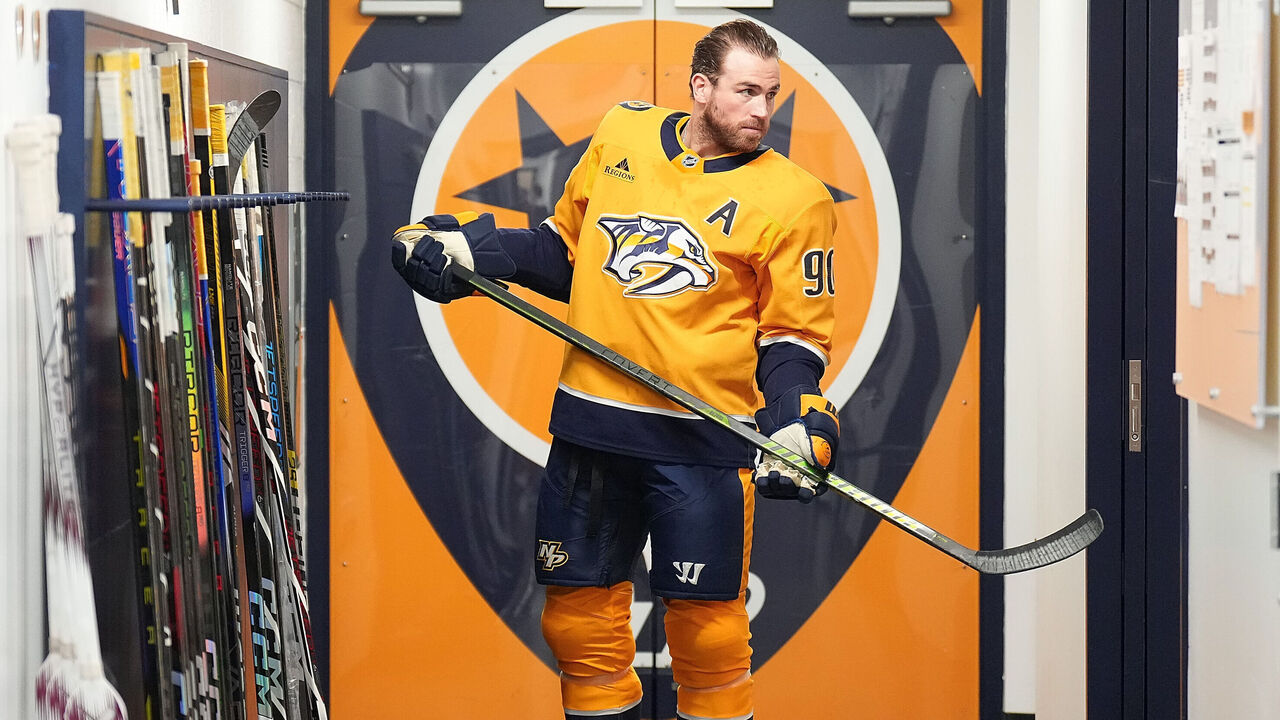
Ryan O'Reilly, who's also counted on to dominate battles, carries one of the league's most unique sticks. The original version featured an exceptionally long, straight blade with a borderline cartoonish little hook at the end. While a revised hook remains, O'Reilly's switch to a higher lie (to help with posture and stability) and toe curve a few years ago has muted the quirkiness.
O'Reilly altered his Warrior after consulting with NHL star turned skills coach Adam Oates. "This is your tool," Oates told the Predators center. "If I can get you a better tool to help you make more effective plays, be more comfortable, and better protect yourself from injury, wouldn't you want to use it?"
To Oates, the stick is a multipurpose tool. He tells clients they'll be lucky to record three shots on goal in any given game - in other words, stick customization shouldn't be viewed strictly through a goal-scorer's lens.
Turk, the shooting coach, works with Bedard, Logan Stankoven, Brendan Gallagher, and other NHLers. One of his core beliefs is that, similar to a fingerprint or snowflake, every player has his own distinct shooting technique.
"If I can customize the player's stick to match what they're doing during a shooting motion - his hand actions - then it makes everybody's job easier," Turk said. "It definitely adds confidence to their game, too. It's like, 'This is my own stick. It's an extension of my body. It does what I need it to do. I don't need to overthink anything. I don't have to try to make the puck spin or get it to a certain spot. No, I just do it naturally, with my process, and I get results.'"
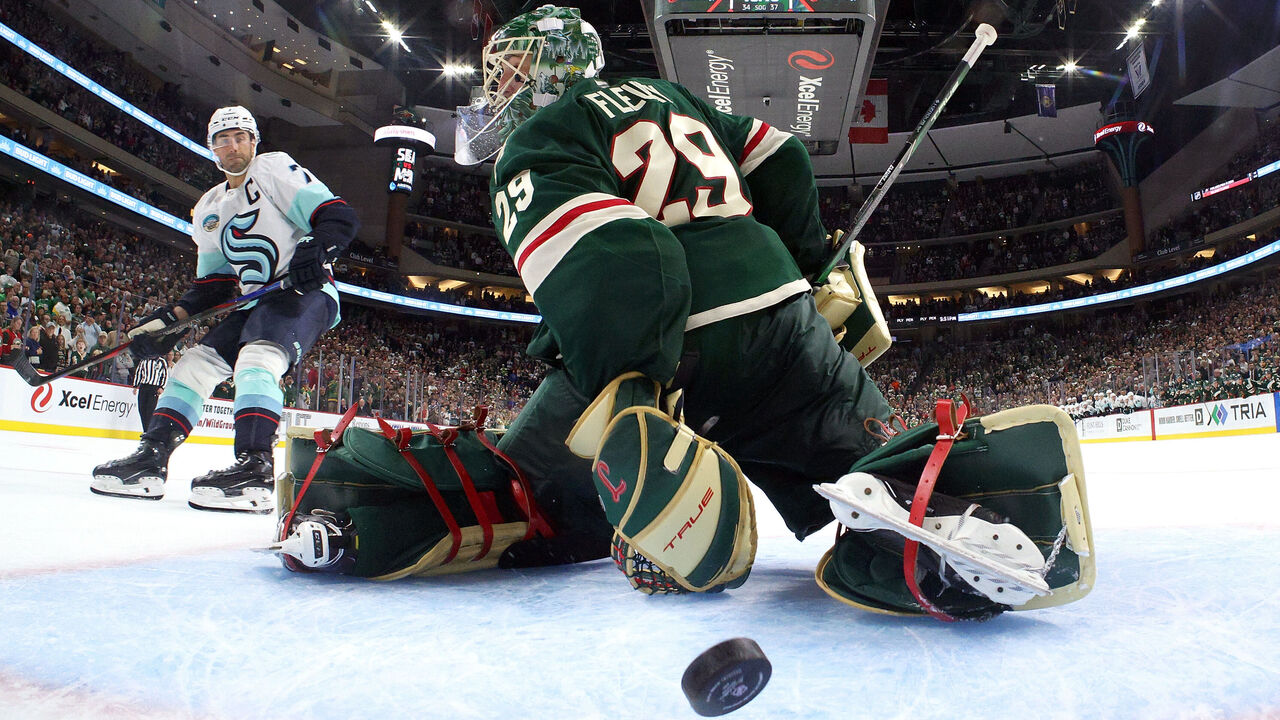
For goalies, the modern shot is nightmare fuel.
The league-average save percentage in the NHL has dipped to .901 in 2024-25 to tie 2005-06 for the lowest rate in the salary-cap era. This season is the fourth straight in which the goals-per-game rate is six or higher. Put another way, the NHL's firmly a 4-2 league for the first time since the freewheeling early 1990s.
The list of driving forces is long. The revamped playbook promotes puck possession. Expansion has diluted the talent pool. Offenses prioritize high-quality scoring chances above all else. Power plays have been fully optimized.
Sticks and mechanics aren't top-tier forces. But both are influential.
Without the modern stick, Auston Matthews probably can't weave layers of deception into his snap shot, Leon Draisaitl probably can't sensibly attempt to score from the goal line seemingly every other game, and Matvei Michkov probably can't scoop the puck up fast enough for another Michigan attempt.
"Older sticks - guys had to physically lean into them. You knew the shot was coming," said the Wild's Marc-Andre Fleury, the only goalie active through the entire cap era. "Players now can hide their release so much better. They can shoot with the stick tight to the hips or tight to the stomach and still get a good shot off. Sometimes their hands are so close to their body that it doesn't even look like a shot is coming. You don't get easy tells anymore as a goalie."
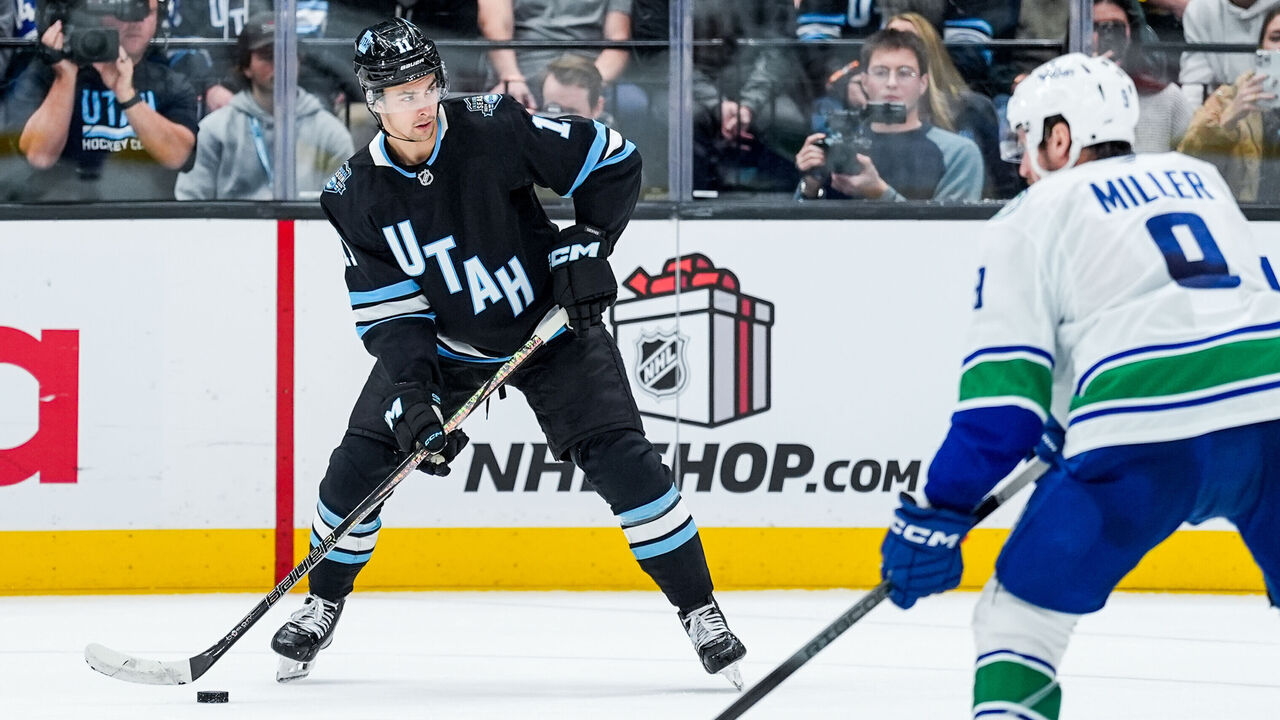
Guenther, who was born exactly six months before Fleury's first game in Oct. 2003, can't recall ever using a wood stick. He grew up watching Matthews' and David Pastrnak's one-piece highlights. His specs aren't overly complicated - 77 flex, low kick, P92 curve, standard height and weight - but his Bauer Vapor Fly Lite suits him, his build, and his quick-twitch hands.
When healthy, Guenther is buzzing around the offensive zone in search of so-called "quiet" ice, the kind out of the goalie's plain view. On one-timers, he transfers his weight from one leg to the other at the perfect moment while leveraging a strong core section to put everything he can into the release.
"Ready to shoot at all times," is how Guenther summed up his approach.
As Turk would put it, that's a cowboy on skates.
John Matisz is theScore's senior NHL writer. Follow John on Twitter (@MatiszJohn) or contact him via email ([email protected]).